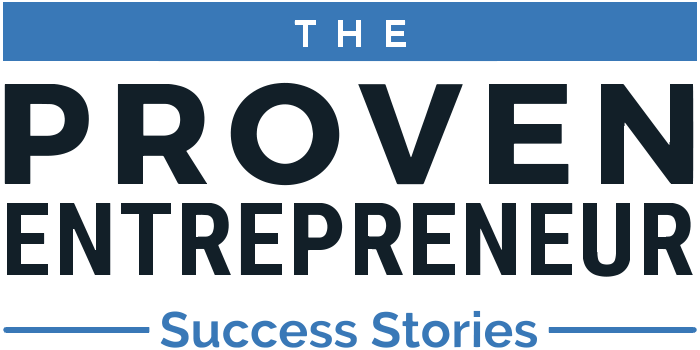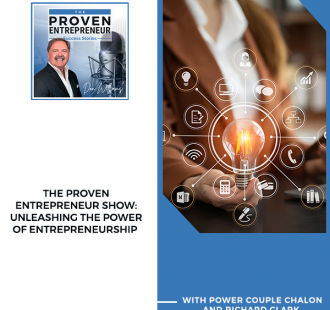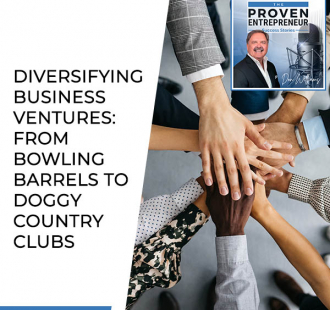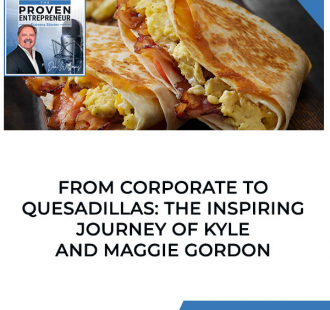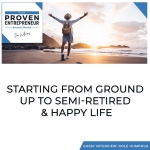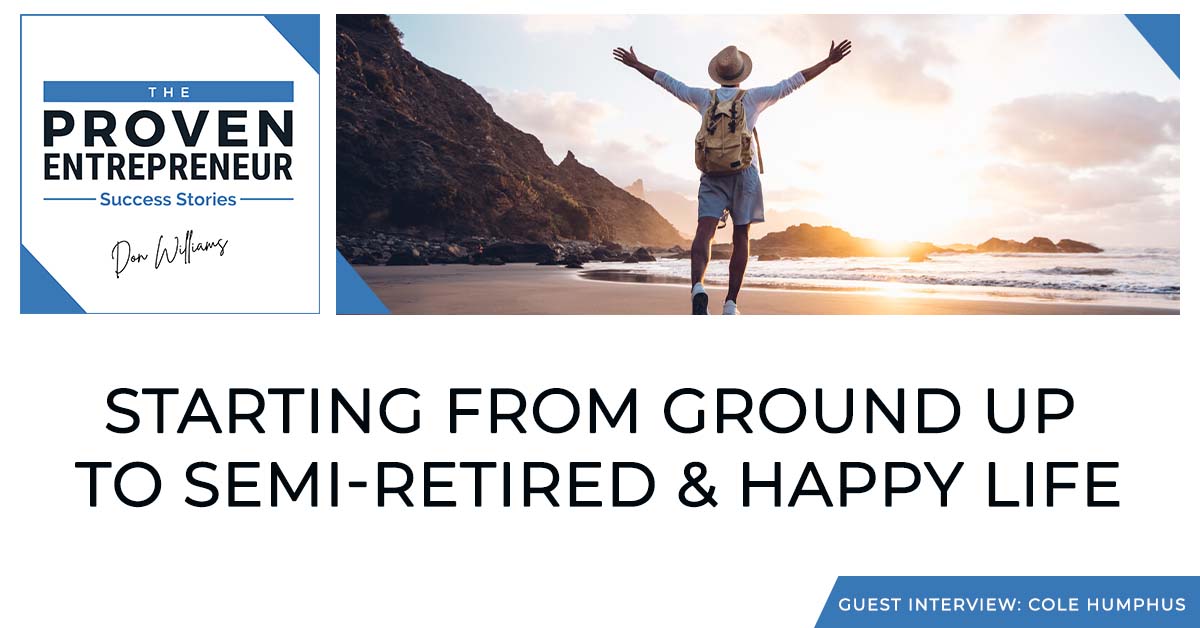
Cole Humphus was the CEO and Founder of Cole’s Classroom. When he sold Cole’s Classroom, he founded Rapid Scale Group that helps online course creators, coaches & consultants rapidly grow their business sales without having to rely on social media or big teams, so they can create a wildly successful, predictable & sustainable business that maximizes their profits & freedom.
—
Listen to the podcast here
Starting From Ground Up To Semi-Retired & Happy Life. Guest Interview: Cole Humphus
I am so excited. Our guest is, in my opinion, one of the top digital marketers on this planet. I don’t know about other planets but on planet Earth, he’s one of the tops. Cole Humphus, welcome.
Thanks for having me, Don.
Let’s jump right in. What are you doing now?
We were talking offline. I’m doing a lot of fishing. It has been a few years since I sold my company. I like to say I’m semi-retired. For a few years, after selling my company Cole’s Classroom, to a software company, I was helping grow the software company. I moved on from that role to get back to doing my own thing, and it has been amazing, aside from the fishing, which is true. I’m still doing a lot of fishing.
I’m squeezing in some work into the fishing schedule. I created a program called the Rapid Scale System. Essentially, it’s me getting back to my roots, honestly, which is helping people. To be 100% frank, when you go from having this super high volume, very “passive.” We all know there’s no such thing as real passive but a low ticket, high volume business model that is sellable, which is what I was able to do.
There’s this big mental shift for me to be okay with doing consulting and going into one-on-one or even one to a few or a group. Here I am now. That’s what I’m doing. I was doing some one-on-one with very high-ticket stuff here and there. Essentially, I realized that I did a lot of souls searching. Naturally, I did not have to do it but I had to do it because I was lost since selling my company. I would start going down a path to try something new, then I had quickly shut the door because of X, Y, Z reasons that did not make sense. Ultimately, what I realized is like what I talk about to my network, and my friends are still a business and growing business in marketing and sales.
In my head, every single day is about growing an online business. I’m like, “It would be a real shame to the world and also to myself and my family if I did not share that and help people.” Instead of helping people learn how to take a better photo with their camera, which in my past company. Now, I’m helping people go and make these monumental changes in their business that, for many, is the difference from making a low 6 to 7 figures and beyond. That, to me, is the most purposeful and impactful thing I can do.
That’s very common for entrepreneurs who have a successful exit for a while, 6 months, 24 months. They think they are going to play golf or fish, and that’s going to be their life. They wake up one day and say, “Something is missing. I’m not scratching an itch. That’s part of my core,” and so they get back in the game. I know your history but if you don’t mind, share when you started Cole’s Classroom, how long you had that company, and your journey with that company.
Make money with your brain. Click To TweetI started in 2013, and I started it because, at the time, I was working in corporate finance. I was doing full-time wedding photography on the side of the finance job. On top of that, we decided to also do another side job, which was teaching online. I think every one of us, at some point in our journey, felt that online is easy. You quickly find out it’s not easy. It’s up to us to decide if we are going to give it the attention it deserves and grow the thing or if we are going to like shut the doors. I almost shut the doors the first 3 times in the first 6 months because it was a very lonely journey.
Nobody was seeing my YouTube videos. Nobody was replying to my email list. It was like, “Why the heck am I doing this?” To condense the story here, I luckily kept going and finally started to get some momentum. By momentum, I mean email list growth. Suddenly, I was getting people coming to the site. I was getting, let’s say, 50 opt-ins a day and had some mailing list and some feedback, which is what I needed at that time. It was like, “Give me a sign that I’m helping people.”
In 2014, we launched our first course and a couple of other products that year. We ended up making $135,000. I say we but at the time, it was only me. We decided that it was time to quit our jobs basically in early 2015 because we are still juggling everything. We are juggling full-time. Corporate jobs we are juggling, full-time weddings, and still growing Cole’s Classroom. The goal is us quitting our jobs was to replace all the income we had, which was $250,000 or so.
I went to the traffic conversion conference because my friend now, Ryan Deiss, was annoying on YouTube ads. I could not that year get away from him. I did not know the guy, did not know digital marketer. I went to this conference because it was in my hometown. It was probably the thing that changed my life because I remember Ryan on stage.
Once again, I’m out of the audience, I don’t know Ryan back then at all. He said something that resonated with me, which was, “People come to me and think they have a traffic problem and they want to solve their traffic problem. There’s no such thing as a traffic problem because you go to the traffic store, and you buy it.”
All of a sudden, I’m like, “That’s good.” I have never done anything with advertising. Right then and there, I was like, that makes sense. I quickly left that conference, knowing I already knew my conversion percentage on my sales pages for these products. If I could get traffic cheaper than how much they are worth, game on. It was simple math.
Luckily, it was simple. It was not simply because I was doing it all and learning for the first time but those were the glory days, to be honest. That was in 2015. I can only imagine if that was me back in 2005, 2008, and 2010. Those days are long gone. Even 2015 is long gone but we will dig into that probably later. The bottom line is that year, I went from $250,000 as the goal to $1.5 million in sales, which blew my mind.
That continued to blow my mind, which was a constant lesson over the years of how we always seem to underestimate our potential because the next year, I doubled it to $3 million. The next year we grew another 50%. We stayed at that number but did change from one time to recurring and ultimately sold the company in 2019. That’s the cliff note version.

I’ve got to ask the question. I know the answer but you switched from a one-time purchase to a subscription model. At the height, you had how many monthly subscribers?
At the very height, we have 10,000 monthly subscribers. The membership was a $49 a month program. That being said, to be truthful, the $49 was the main price point. We did have a down-sell option. Of the 10,000, I want to say we had about probably, 8,000 of that would be at that $49, and there was a smattering at the 19 and 29 levels but it was a good MRR base.
It was great recurring revenue. It was not easy to get there and keep them from there. That is the big problem with membership sites, especially in the info space compared to SaaS and software. Ultimately, looking back, I now know more than I did even then what was the secret to my success and the rapid growth of that membership.
It’s easy for me to say we went from one time to membership but the actual truth is, we never quit selling one time. We use that as leverage to get people into the membership and leverage to keep them in the membership, which is something that nobody else talks about. I have been, for lack of a better word is, on my pedestal to refute this idea and help people.
A lot of people start this membership with this pie in the sky dreamland. They are going to get all this value. They are going to come in. They are going to pay me forever because it’s such a good deal. They realize memberships are super hard to scale because you are always battling churn. They are super hard to sell because they are not specific.
Let’s say that you have a membership called the Proven Entrepreneur. That’s not specific. I am an entrepreneur but I have no idea why I should pay you $49 a month or whatever. There are all these things that ultimately get people trapped in this, whereas they thought this was going to be the thing that was going to take them off into sailing in the sunset and have this recurring revenue forever. What I find often happens is the people launch these memberships and ended up spending 90% of their time on something that might only be giving them 10% of their revenue. It’s a bad situation.
I have been there. I don’t have a rags-to-riches story like, “I have $0.10 in my bank account, then I put it in the Facebook ad, and now I’m rich.” What I do have is that, honestly, I was there. That was me. In the first year, we had the membership. I was disgruntled over it because we were already making $250,000 a month for the business.
The membership was making $25,000. That 90/10 Rule. I was now having to deal with payment declines, not being able to scale it, retention, churn, all the above, and producing new content. I’m like, “Something has broken here. I’ve got to figure this out,” because I was going to let it die and let it bleed out because it was not worth my time or I was going to go all in. I ended up going all in and cracking the code a bit. The rest is history. That’s a perfect open loop, so I will say, leave it at that.
What gets you to one place isn't necessarily the same thing that will get you to the next. And that's totally true of people. Click To TweetTake us way back to young Cole. You are from the San Diego area. I live in the San Diego area now. Did you come from an entrepreneurial family? Were your parents or grandparents entrepreneurial?
Not at all. We are the farthest from it. I don’t mean the other end of the spectrum like lawyers or doctors. None of that. The extent of the entrepreneurial spirit, my dad had his own landscape company but he did not have a bunch of employees and big accounts. It was literally him. I come from as blue-collar as it can get. My mom was a stay-at-home mom. We are lucky and fortunate for her because both of them instilled some very good work ethic and money management because we did not have money. We were not on the streets. We were lucky that we were able to move into the home. That was my mom’s family home.
At an early age, I learned the value of a dollar. I learned to not blow money and to save. I have guitars with me, even as a kid. I have had a lot of this gear forever. Long before I was an entrepreneur, I was a musician and saving my money from work to go buy that Les Paul. I remember. I paid $600 on it used, still got it. I always have had this idea of, “If not broke, don’t fix it,” thing.
I remember my dad one day telling me something that always resonated with me. I should say, stuck with me. I was in his truck. I was probably 7 or 8 years old. I was old enough to “help him” on a landscape job. I don’t think I was that helpful but nonetheless, I remember I was driving in his truck home. He says, “When you get older, don’t be like me and make money with your hands. Make money with your brain.” That’s what I did.
Good counsel. It’s so common. I’m fortunate I get to do a lot of these and know a lot of entrepreneurs all over the planet, and work ethic is a common thread. The other common thread is so many entrepreneurs do not come from the same type of entrepreneurial background. Your father was entrepreneurial in a little different flavor.
I come from a long line of wheat farmers in Kansas. They never bought anything that could not be baling wired or Elmer glued back together. I used to say, I have the first dollar I ever made but I bought a wallet with that dollar but I have the second dollar. I kept that. What was your first business?
My first “real business” was when we were doing wedding photography, which is a service. My first online business was Cole’s Classroom. Before that, looking back, I had a couple of things. I would not call them a business but they certainly were my first tipping my toe into entrepreneurship. Also, looking back and be like, “I did have that entrepreneurial spirit. I only did not know it.” The first thing I can say is I used to teach guitar lessons. I was probably about sixteen years old. I was teaching other people, both adults, and kids, for $30 or $25 an hour. Honestly, I even had two price points.
I was already experimenting with pricing. It was like $25 for a half-hour or $30, or $35 for the hour. I don’t know but I had a handful of clients there. I was at my parents’ house. They would come over, and I would write down, give them a tab lecture and all this stuff, and off they went. They would do that weekly. After that, I’m also in the music space. There’s this website called SanDiegoPunk.com, which was for punk rock music. It was super niche. It was the community for San Diego local music. I did not acquire it per se. It was gifted to me because we became friends with the person who owned, ran, and managed it.

He did not want to do anything with it anymore. He was like, “First, I went to my sister, and she did not want it.” He was like, “Do you want it this?” There was one advertiser that was paying money and I was like, “I will take it.” The first thing I did is I started going, getting more advertisers, coming up with more expensive pricing and packages, and locking them in for a year but giving them a discount versus monthly.
Those were fun little ventures. I even remember I took a picture at one point. I don’t know where the picture is but I remember getting it. It must have been cash because I don’t understand why I would have taken a picture of it. I remember when I locked in that twelve-month contract for this local advertiser and took a picture of the money I had. It was probably $600 or something. It was like, “Look at this.” Advertising online.
The first sale you make of anything new is tremendous. Nothing changes. I will share a milestone now. It took a full year of launching Cole’s Classroom. In 2013, waking up at 4:30, YouTube videos, email marketing, blog posts, the whole night for all of 2013, before we even tried to make a buck. In 2014, we produced more content, made products, sell, and we made $135,000 that year, which was great. I looked at my Stripe account and would not know it. I’m at $120,000. I launched this thing days ago. Instead of hundreds of clients, I’ve got twenty.
Without all of the time and YouTube channel, I don’t have any of that without the sales funnel, without the ads. These milestones are always important for us to acknowledge and put them into relative terms, too. I’m excited about what I’m doing now, who I’m helping now but also, what the next few years will bring for me.
The next chapter in the book of Cole. Think back to a hard moment, if you don’t mind. Something in your entrepreneurial path that was challenging. Maybe even brutally challenging but now, in retrospect, when you look back, you are like, “It was necessary, and it served a greater purpose but it hurt when I was going through that.” Do you have one of those?
I’ve got some easy and harder ones. The easier ones are more from a place of logic. I had to let go of two people. Both people were the first two on the team. It was a lesson for the people, even that gets you like, “What gets you to one place is not necessarily the same thing as going to get you to the next.” That’s true on people.
Both of them developed resentment from even seeing the rapid growth of the business. I’m sure I’m not the only entrepreneur that’s had that where you are doing your best as the leader to empower them, to give them opportunities for growth, and take care of them. Even for the work that they are doing, make them feel valued. All those good things.
There could be these internal demons that they have and can develop feelings that then these feelings can magnify and compound. Ultimately, they became a real problem. Not only with our relationship but even the broader team. In almost every case, these people that you end up having to let go, you realize you should have done it sooner. You keep going, “Hope it’s going to change,” and finally, you say, “Enough is enough.” You realize, “I should have done that months ago.”
Bet on yourself earlier. Click To TweetNot only we, as a company, better off but they are, too. The inverse of that is what I was going to even share. The other thing I was going to say it’s related to the same thing, which is firing myself from my salary or my job. I’m part owner of this company. I’m no longer employed by my own company because I realized it was time for me to move on.
Once again, I probably should have done it sooner. There are all these, in terms of things that are hard to answer your question. What’s hard is, it’s not that I had an attachment to Cole’s Classroom but I have a lot financially riding on the success of the broader platform that we have. We are continuing to grow. We are continuing to do M&A but the truth is, I’m still a minority owner. It’s not my company. I’m a part-owner but a very small one, in the grand scheme of things, once again, it’s all relative. I had to come to terms like, “It does not matter if I’m here or not.”
The amount of polls that I have is so minimal with the trajectory. The bigger problem for me was all of the things that I loved about entrepreneurship were gone. It had nothing to do with me having a boss per se. It had everything to do with what my day-to-day work looked like and all of the things that I did not like about Corporate America. We are now back. The fact that you had that and it was your own company. That became way more frustrating back when I was in Corporate America.
I had zero ownership, zero track record, zero skills. I was there to do a job. Now, every single week, I am looking at all the things that we should be doing that we aren’t doing. All the things and meetings we were having that did not need to happen. All of the inefficiencies that, in my opinion, did not need to be there. These are all things that simply, as an entrepreneur, we get the freedom to do whatever the heck we want. I missed that freedom.
The important note here that I realized in part of my soul searching was more of the freedom to act as opposed to the freedom on the calendar. The freedom on the calendar is important but it was more of the freedom to do and implement the ideas that I had in my head that I no longer could do. It has been blissful to start my new thing, and guess who’s on the team? Only me. Like, “We need a logo.” I did it. I hired somebody to make the official website but for that whole launch that we did, and even still now, I’m the one running the ads and doing the coaching. It feels great. It’s not going to be that way forever but now it feels awesome.
A couple of strong points there. Number one, what got you here won’t get you there. That certainly can include people. I have a monthly forum of eight other entrepreneurs. I always think I’m the hatchet guy because my rule is, “If I ever think about letting someone go twice, I never think about it the third time.” I’ve got tired of keeping someone too long, finally letting them go, having a huge upgrade in their replacement.
Almost every time and without a lot of effort, then seeing them continue on their path and something that was more fulfilling to them. You come to realize, “There’s no sense dragging it out. This is not marriage and truthfully, everyone will leave.” You will be there at the beginning, and the end, very few will be there the entire ride. That’s the way it goes.
That right there is a lot of wisdom that even for me, I’m like, “That’s awesome.” It’s such a reminder, and we keep people around because we want to be nice. At the same time, business is business, and it’s easy to argue you are not being nice by continuing to drag somebody into a situation that they aren’t fulfilled in.

It is but it does not sound good on the evening news. It does not sound like you are being nice. Even though you probably are. It does not sound that great. What about a warp speed moment? James T Kirk would call Scotty and say, “I have got to have more power, and I need warp speed.” Sometimes when your business was doing well but something happened where things began to click. You had this rapid acceleration that’s common in an entrepreneur’s journey.
When I think back to the moment where things went fast because to get to the $1.5 million, it was like an accumulation of everything with a month-over-month like spend more on the ad. It was gradual because the truth is I’m a risk taker but also, I don’t take the risk until I have enough statistical confidence that I can go all in. Going from $100,000 to $1.5 million over the course of a year, it was rapid but there was nothing monumental. That being said, the real big moment was when we started scaling the membership because we were growing net MRR growth month-over-month, $30,000 to $50,000 a month.
I saw the chart because I kept it. I know you were in our membership thing. There was a chart in there. The first year we were flat line because I could not figure out what to do to grow it. I was neglecting it, then I figured out what was working well, which was a webinar to a trial. I had these big jumps then I slammed on the brakes.
I’m like, “Let me see if these people stick around or if they are going to leave on day 31, and I’m screwed here.” A few months later, I’m like, “They are still here. Game on.” We went from an $80,000 MRR. I want to say in August to $125,000 the very next month and kept going. The growth from $100,000 in MRR to high $300,000 in about twelve months, something like that.
We were all in our suites. I was in my zone. I already, at that point, had enough mental clarity and experience with a paid acquisition. I had enough chops and talent with our numbers. I have seen the membership attention churn. I knew that. Everything was like all-systems-go. It was like, “How much money can we spend before the metrics fall apart? When it fell apart, let’s get a new offer up, and we would keep going.” Honestly, that’s what’s fun. The things that I missed with not being at the helm anymore. That is the most exciting thing.
We have to take a step back and always appreciate it if we were to go ahead, and most people in America would do almost anything if they can guarantee an 8% return on their money over the course of a year in the stock market. You have compounding. Screw all the twenty-year vision stuff. I’m saying 8% over the course of the year. If you could master turning a dollar of ads, even in a 30-day period, even if it was only $0.50, 50% of your money in 30 days, why the hell are you not going to throw everything at it literally? Those were fun times.
If you could go back to twenty-year-old Cole, what counselor piece of advice would you share with yourself that would have sped things along, smoothed things out, made things perform a little better?
Bet on yourself earlier. There’s a time and place. I’m still doing anything recklessly. I’ve got plenty of money in the bank now but I’m still building my new business as if I have nothing in the bank. The truth is, I don’t because I have a new business account that does not have all the money, all my proceeds from everything else. That’s still smart but too many of us, especially if you are an entrepreneur, are like that because everyone can label themselves an entrepreneur.
There's always this mountain of challenges no matter what you do. What separates the winners from the losers is the hustle factor. Click To TweetWhat makes somebody a proven entrepreneur to piggyback on the title here and, more importantly, a successful one is how committed are you to rolling up your sleeves, scrapping, and finding the solutions? There’s always this mountain of challenges no matter what you do. What separates the winners versus the losers is the hustle factor. Now hustle does not mean it’s a Gary Vee hustle, working fourteen hours a day, every day, and content. I like to work smart, and therefore, I don’t do that but teach his own. The point is, either way, no matter what the hustle looks like, you have to be willing to hustle.
I find in too many people that want the entrepreneur lifestyle, that dream. They know that it’s out there but they are not willing to do what it takes to get it. With that disclaimer out of the way, if I was to look back and if I had the way, I’m wired now. If I had more confidence back then, if I was here now talking to my twenty-year-old self, then I would say, “If you believe that it’s time and you’ve got something to share, help, and you can do it, then do it. Don’t spend the seven years in Corporate America. Don’t continue to let fear hold you back from making the leap. It’s hard.” Even with my new thing now.
Me, walking away from the steady paycheck, it’s different now. I’ve got a family. I’ve got a very expensive mortgage. We live in San Diego. It was still hard because I had to go back, look at it and say, “You say that you want to help more people again, you want to keep working but it’s different.” I’m semi-retired. I’ve got enough money that I could ride the investments. This is what I was asking myself, “Do I still have enough drive, motivation, hunger, and hustle to go in and make this thing something, as opposed to another idea that lasts 30 days, then I shut the doors?”
One of our mutual friends, Roland Frasier. I met Roland years ago at a conference, and I did not know him. We were teamed up. I was sharing something with him where I was like, “I’m a little reluctant to do that.” For our audience, if you don’t know Roland, it’s very a matter of fact of easy to talk to. He was like, “Why are you not doing that?”
I was like, “I don’t have a good answer for that.” The proven entrepreneur is not always someone who’s successful in every venture and typically has ventures. Sometimes there was a mushroom cloud in the Eastern sky. It blew up, and it blew up big but they figured it out. They had enough hustle to keep trying to solve the problem. Sometimes, the problem change but other times, they’ve got to figure it out. Spend a couple of minutes. Tell us what you are doing in your new venture. Tell us the company name and give us as much detail as you like.
The program name is the Rapid Scale System and the website for anyone who wants to go. You can go to RapidScaleSystem.com but you can also go to RapidScaleGroup.com, which is the company name. That’s where I’m going to be sharing all kinds of articles and blog posts and essentially in videos. Everything that’s in my mind is going to eventually be in the blog for free on the Rapid Scale Group.
The program is a 90-day program. It’s 90 days because it’s a group coaching program. You get access to the course curriculum. It’s all about how to go ahead and how to put your business profits on autopilot online. I say autopilot because there are too many people out there that have a product or service but I’m focusing on people that have products, as opposed to one-on-one services.
There are a lot of one-on-one people who want to sell to one to many. I can help those people for sure. The point is you have something. The typical path that people fall into is this idea of, “I’m going to go and put all this content out for free, and I’m going to amass this audience. Once I have an audience, then I can monetize them. I’m going to make up a course, a program or whatever, then I’m going to make some money on them,” and people get stuck because traffic is not limited unless you are using advertising.
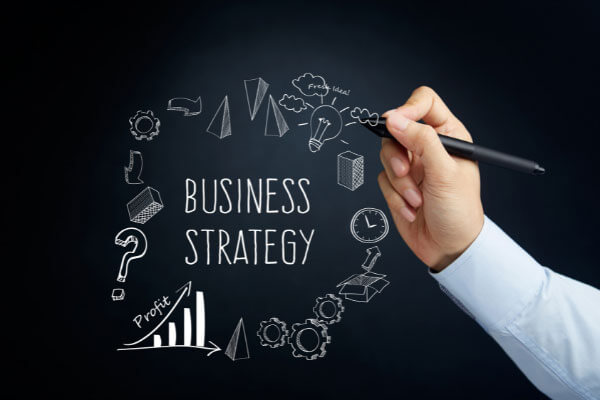
People go, “I made $100,000. People love my product. I’m great. My product is great. I’ve got testimonials.” They go and start running ads, then they are not profitable and are stuck. What I have found is there are a lot of reasons why people get stuck in that organic hustle stage. One reason is if you have never had a cost basis. If your cost was your time and you have an audience, you have already warmed these people up for years. They are going to buy anything you put together. Essentially, you are getting a false positive. You think you ended up having something scalable.
You think you have something amazing but you sold it to the people that already love you the most because you have been helping them for free for the last many years. People end up getting burned out on the organic hustle. We know that Instagram, Facebook, LinkedIn, their algorithms hate us all. A lot of times, what happens is they think the answer is ads because they see everyone else and people like me doing it.
If you don’t have the right business foundation, right business blueprint, business model, principles or even the right product suite, as I call it, you never can get off the starting line. The reason why is because advertising in the year 2021 and beyond is a lot different than the year 2010. Why? It’s because it costs more money. If it costs more money, then all the easy money is gone. Inherently, what we have is a lot of people that are essentially product creators.
When they need to go and become online business owners and a more fully fleshed out product suite, essentially, we can have something scalable. Something sustainable. To be honest, I have been geeking out on this whole idea. I have been having fun with the COVID vaccination talk by simply saying, “How can we be immunized against Facebook ads cost or any ad platform costs?” I believe we can, and I know we can.
The way that we can become immunized and get our “vaccine” against advertising costs, which will continue to rise is, by having the right strategy foundation upfront to build a business that gives you enough lifetime value. Even if your ad costs were to triple, you are still profitable and scalable. The rapid scale system touches on these five phases.
What I like to say is before you can rapidly scale, you need to rapidly have the right strategy. That’s Phase 1. You need to have the right creation, meaning building your products and services out. Phase 3 is implementation. You have to take action but then you have to measure it and see how the data is looking.
You have to tweak it. You have to optimize it, then and only then you can scale. The Rapid Scale System is 90 days to cover and help people go through that entire five-phase process, you get weekly calls with me. You get access to our group. Essentially, with the 10,000 members before with Cole’s Classroom, I have the same idea, which is, “Nobody should be a pain member and go without getting their questions are their challenges answered.” That’s what I’m up to. It has been a lot of fun.
Let me ask you this, coaching. I hired my first business coach several years ago, and I have been an entrepreneur for many years. When I joined that program, there was a lady sitting next to me that said, “Let’s join together, and we will get rich together.” She was pre-revenue, and her business was a Japanese organization or something where I did not see how that was a real business but I said, “I will join with you and we will see.”
Don’t continue to let fear hold you back from making the leap. Click To TweetI did not have the heart to tell her. Maybe my boat is already docked in the destination you are looking for. I’m not new but I learned a bunch. I stayed with that pretty high ticket coaching deal for a couple of years, then I met another fellow that I paid $20,000 for one day and worth every penny. I help people as one of those coaches but in your journey or path, did you have some coaches along the way?
I have been in the War Room Mastermind now for years and that is a brilliant source of multiple coaches. The best part about the War Room or any Mastermind is access to the right people. Ryan Deiss is not the stranger onstage. He’s my buddy, so much so that he’s going to be coming on and helping people in the Rapid Scale System with a VIP Zoom call. We are that close now. The same with Roland Frasier and all these people that are wicked smart. It’s so funny because what I have realized even with my students, I look back and I’m like, “Is there a shortcut for success? Why is it that some people sink and others swim?”
What I have decided is, and I have 100% conviction with this, it comes down to three things. There is a shortcut to success. You have to have the right strategy and foundation in business model planning, all that. The right plan of attack, then you have to take rapid action. The third thing is you have to have access to the right people who have been there and done that. I say that when looking at my path and when you think about those three things, the cool thing is you need all three. You think about it. You can have. You can pay. I could pay $20,000 for a day. I won’t say with Roland because I know he’s more than that for a whole day.
At least now, he is. That’s my rate now. I know that for somebody who comes to me, they will ROI that if they also take action but if they came to me, paid me, and got the access but then they don’t take action, it’s for nothing. Conversely, somebody can go through the rapid scale system. They can have the same blueprint. Not the same, the one for their business. They could also maybe take action but they are still going to hit hang-ups and challenges.
If they don’t have that third component of access and somewhere to go to get unstuck, then they are no longer on the shortcut. Now they are going through trial and error. It’s funny. When I would speak at traffic and conversion conferences or whatever, people would come up thinking about joining the War Room. They would go, “Cool.” The number one question is, “Is it worth it?” Everyone asks me, “Is it worth it?”
I started answering it this way, after how I think about it myself, “There are four meetings a year and every meeting I go to, I will come back from a couple of days of meetings, and I will have a few pages of good notes.” Not even taking down everything. Only like a-ha moments. “If you can’t go ahead and ROI the $25,000, which is what it was. Now, it’s more. If you can get an ROI in that over the course of a year, you are not trying.” It’s that simple. Let’s talk ROI. I did this in my head.
ROI of access, of coaching, and all of that. When I joined War Room, I had a total of $1.6 million in sales to date. That was two years’ worth. I had to implement. It’s not like War Room was not able to help me with that. That was on me but number one, the most obvious thing is thinking bigger. Always thinking bigger around people like Roland and constantly upping what we thought was previously our ceiling. From the time of joining War Room, what’s five years, times $25,000 a year? $125,000. I have now sold over $13.6 million worth of stuff. I went there with $1.6 and sold a business along the way with guidance and help from my mentors, Roland and Ryan Deiss. It’s worth it unless you don’t want to try.
That’s pretty far north of that 8% we were talking about. When I first met Roland, I was an attendee. He was a speaker at this conference. The last time I saw him, I was on a European-speaking tour. I saw a social media post that he was in London. I was like, “I’m in London. Do you want to have lunch?” He was doing an intensive. We met and had lunch.
People’s lives don’t have to follow this rigid life of working for somebody else forever. Click To TweetIt pays to associate with people who have been there and done that. The average entrepreneur will find their performance most closely resembles the five other entrepreneurs they are closest to. If you want to elevate your game, play with bigger players. It’s doable. We are running out of time. Thank you so much. I’m doing my fourth book now, which is a book on gratitude.
It’s the first thing I have done from the consulting side that is not commercially intent. I have already stated that we are going to donate all the money it makes to the St. Jude Children’s Research Hospital. I hope it’s the most successful thing I have ever done. That would be great. Tell us about something you are passionate about that’s not business.
The truth is the thing that I am most passionate about, money aside, is helping grow their business, whether I’m getting paid for it or not, because I never thought my life would end up the way it did. I know that there are so many other people that have such amazing talent and amazing products. They have no idea what their true potential is.
I want to help people break away from this idea, which is such an old-school way of thinking, which is following the status quo. Like going to school, getting a degree. It’s is fine. I’m not against getting a degree but your people’s lives, don’t have to follow this rigid life of working for somebody else forever. Go to school, get the degree, buy a house, do the whole shebang. It’s amazing.
Look at what the pandemic has done now, where people can work from anywhere. There’s an element of freedom that I want everyone else to be able to experience. Anything I can do to help with that is something I’m passionate about. The other thing is, this is more of a deeper personal thing. Something that is a hardship and something that we have had to deal with on the total personal side is starting a family. We have gone through infertility issues when we have been trying to start a family. That was a four-year-long excruciatingly painful process. Multiple years before we even knew what the problem was.
Luckily, we have a positive outcome. We had no choice other than to go through IVF. We did it. Thankfully, I had money in the bank from the business that I was able not to have that financial constraint that other people do. Something that I’m passionate about that I would love to see there being more support for is people who are struggling with starting a family because it is something that has such a stigma about it that causes many people to be very tight-lipped and not want to be open about. That’s the thing I want to break the mold on. Along the same lines, not to go off on a total tangent here but the biggest thing that I see as an issue with society now is the lack of authenticity online with people.
That drives me crazy. Not because I have an adverse reaction to seeing get-rich-quick ads in front of Lambos and all the fast cars. I now have two girls in the family. I look at what social media is now and this constant game of perception over reality. People, men, and women are trying to put on this show to get followers. To me, it’s a problem that we need to get ahold of because there needs to be more authenticity in the world. There need to be more people that are showing reality rather than trying to have a make-belief life. The truth is that’s going to cause a lot of mental harm to a lot of people, and this complaint, this comparison game feeling not good enough. I’m mostly worried about it from kids growing up.
I did not see the real magic in my business, my family, and my personal life until I started playing 100% from my heart. The more authentic people can be, the world will love the real you. Not everybody. There’s going to be some that don’t but for the most part, the world will love the real you and not have much to do with a facade of you.
The truth is that was the secret to Cole’s Classroom success. When I gave a little farewell spiel in our membership group, the most notable comments were like, “We are going to miss the Facebook Lives you did from the gym on the treadmill. We are going to miss all of you showing up and being real in a tank top because you’ve got home from the gym.” I did that because that’s who I am. I did that because that’s when I was inspired. I did that not because I was trying to fabricate what they would think.
I’m not going to do a video because I’m scheduled to do a video. I’m going to do it when I’m inspired and when I can help. I’m going to be doing the same thing with my venture now. I know that I’m doing it for the right reasons. The best part about it like you have experienced it. It’s more effortless. Why should people be spending so much time and work trying to be anything other than themselves?
I cannot endorse Cole and the Rapid Scaling System enough. He truly is one of the most acclaimed digital marketing experts on this planet. Check out his stuff. Cole, thank you so much for joining us. I will see you in the next episode.
Important Links
- Cole Humphus
- Rapid Scale System
- Ryan Deiss
- SanDiegoPunk.com
- Roland Frasier
- RapidScaleGroup.com
- War Room Mastermind
- St. Jude Children’s Research Hospital
